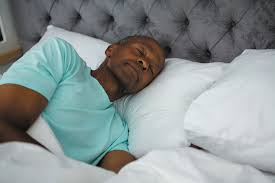Source:theladders.com
Roughly three million Americans develop insomnia each year. Just about 30% of this demographic experience persistent symptoms as a direct result of the condition and roughly 10% exhibit symptoms debilitating enough to disrupt their daily functions.
According to the American Academy of Sleep Medicine, the most common symptoms of insomnia include fatigue, moodiness, irritability, anger, hypersomnolence, lack of concentration, poor memory, and headaches.
More often than not poor sleep is authored by psychological factors, with anxiety being chief among them. Clinical care might certainly help attenuate these scenarios but developing sustainable life habits optimizes every conceivable measure.
In the past, Ladders has focused on the dietary elements of non-pharmaceutical sleep care but there’s a lot to be said for the effectiveness of physical practices.
Larry Piller, Certified Massage Practitioner and author of Stretching Your Way: A Unique & Leisurely Muscle Stretching System, recently imparted Ladders with several physical remedies for “bleary-eyed people” suffering from chronic insomnia.
“Stretching has many benefits, and one of those is that it can help you wind down and ease the tension at the end of the day,” Piller explained.
Below are four-techniques shown to promote quality sleep without the need for medication or a dramatic lifestyle change:
“Just by knowing that these stretches are waiting for you anytime you want them, day or night, it will give you a feeling of tranquility as opposed to a night of anxiousness. It’s like having your favorite ice cream waiting in the freezer, Piller continued.
Stretch 1. While lying on your back, extend your right shoulder and elbow out to the side as far as is comfortable. At the same time, bring your thumb and hand downward. “You can also perform this stretch while standing, Piller says.
Stretch 2. As you lie on your back, bring your toes downward and the sides of your foot inward. These stretches for the tops and sides of your feet can be done lying on your side as well, as long as you have room to bring your foot or feet down or inward. You also can use a pillow between your legs to raise your foot so you can bring your foot or feet down, or hang your feet over the edge. “This by itself, or in combination with other stretches, has a high chance to put you to sleep like a little baby,” Piller adds.
Stretch 3. Lying on your back, stretch both arms out. Make a light fist or let your hand dangle over the edge of the bed, extending your shoulder and arms out as much as is comfortable. “For any stretch with your arm over the edge of the bed, if you would rather, you can prop it up with a pillow. In any position that feels good, put your arm over the pillow and let its leverage pamper you.”
Stretch 4. While lying on your back, just extend your shoulder and arm out as is comfortable
Insomnia may be ubiquitous but it’s also one of the most treatable impairments in the world.
According to a recent study conducted by the Pennsylvania School of Medicine, 75% of insomnia sufferers recover from their condition without medical intervention. If the underlying cause is one related to psychosis seek medical attention, though yoga and medication have been studied to optimize the effect of psychiatric treatment.
“Whether caused by stress, illness, medications, or other factors, poor sleep is very common,” said senior author Michael Perlis, PhD, an associate professor of Psychiatry and director of the Behavioral Sleep Medicine program. “These findings reveal new insights about the paths that acute insomnia takes and can inform interventions that target poor sleep and help people recover sustained sufficient sleep.”
